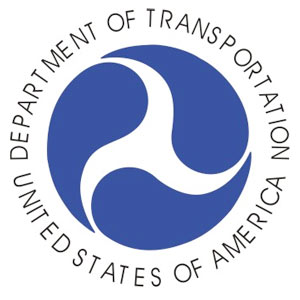Transportation infrastructure: DOT announces new funding for TIGER II grants

Roughly four months after the Department of Transportation awarded grants to various U.S. governments, cities, and transit agencies as part of the $1.5 billion Transportation Investment Generating Economic Recovery (TIGER) Discretionary Grant Program, DOT Secretary Ray LaHood has announced there is $600 million in TIGER II grants available for surface transportation projects.
DOT officials said that these “grants will be awarded on a competitive basis to projects that have a significant impact on the nation, a region or metropolitan area that can create jobs.”
As was the case with the first round of TIGER funding, the objective of TIGER II grants is to ensure that economic funding is rapidly made available for transportation infrastructure projects and that project spending is monitored and transparent.
The first round of TIGER grants were distributed among 51 projects out of more than 1,400 applications that came in throughout the country. According to the DOT, the total amount requested from the more than 1,400 applications would have rung in at nearly $60 billion worth of projects—or 40 times the amount available through the program.
Freight transportation projects were well represented among the winners, with 22 of the 51 projects pertaining to goods movement, according to the Coalition for America’s Gateways and Trade Corridors (CAGTC).
Some of the programs receiving freight-related TIGER grant funding included:
-National Gateway Freight Rail Corridor (OH, PA, WV, MD), $98 million;
-CREATE Program Projects (IL), $100 million;
-The Southwestern Regional Intermodal Freight Transportation Hub (IL), $6 million;
-Crescent Corridor Intermodal Freight Rail Project (TN, AL), $105 million;
-Port of Gulfport Rail Improvements (MS), $20 million;
-Alameda Corridor East: Colton Crossing (CA), $33.8 million; and
-U.S. 395 North Spokane Corridor (WA), $35 million.
Mort Downey, senior advisor at infrastructure firm Parsons-Brinkerhoff, described the TIGER grant award winners as the “cream of the crop,” considering that one out of every 38 submitted projects received funding.
The criterion used by the DOT to select projects was fundamentally cost-benefit analysis, and this bodes well for the freight-related projects that were selected. But in order for these projects to be considered successful, Downey said they ultimately need to deliver.
“These grants are important on the job creation front and even more importation on the long-term economic growth front—particularly for the freight projects,” noted Downey. “The freight projects in particular have very large cost-benefit potential and are largely focused on shippers in terms of supply chain efficiency and reducing inventories and [transit time] delays. A lot of these projects were ‘partnership projects’ between entities like railroads and ports, and TIGER money acted as the closer to make these deals work.”
In terms selection criteria for TIGER II grants, submissions must include: contributing to the long-term economic competitiveness of the nation; improving the condition of existing transportation facilities and systems; improving energy efficiency and reducing greenhouse gas emissions; improving the safety of U.S. transportation facilities and improving the quality of living and working environments of communities through increased transportation choices and connections.
The DOT said that pre-applications for TIGER II grants are due on July 16 and applications are due on August 23 from state and local governments.

Article Topics
News & Resources
Latest in Materials Handling
Registration open for Pack Expo International 2024 Walmart chooses Swisslog AS/RS and software for third milk processing facility NetLogistik partners with Vuzix subsidiary Moviynt to offer mobility solutions for warehouses Materials Handling Robotics: The new world of heterogeneous robotic integration BSLBATT is looking for new distributors and resellers worldwide Lucas Watson appointed CSO for Körber’s Parcel Logistics business in North America Hyster recognizes Dealers of Distinction for 2023 More Materials HandlingAbout the Author
Subscribe to Materials Handling Magazine

Find out what the world's most innovative companies are doing to improve productivity in their plants and distribution centers.
Start your FREE subscription today.
April 2024 Modern Materials Handling

Latest Resources










